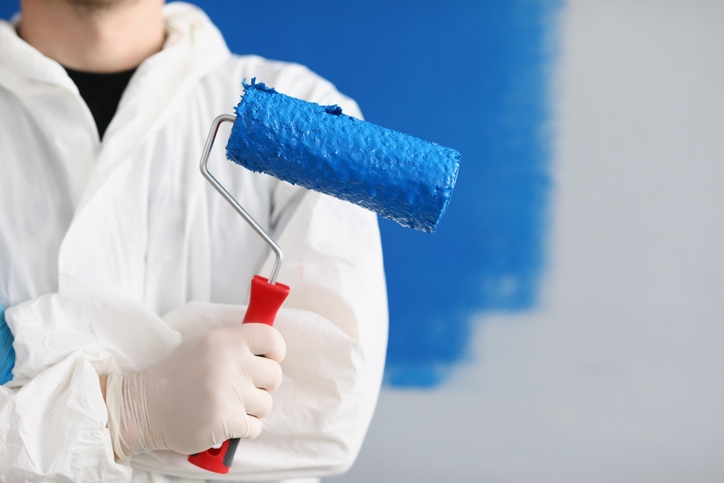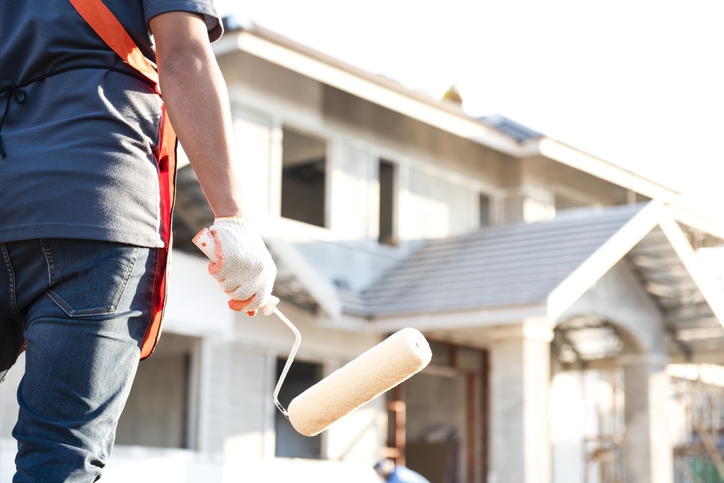Painting commercial buildings in the Dublin, CA area is usually complex due to their large scale, multiple surfaces, varying materials, and high-traffic areas. It requires specialized equipment, proper surface preparation, and adherence to safety regulations. Coordinating with business operations and ensuring minimal disruption adds to the complexity.
Discussing your needs with commercial painters before starting the project is crucial to selecting the correct materials, techniques, and timeline. It helps align expectations, ensures proper surface preparation, and allows for addressing any specific requirements, such as safety protocols, budget constraints, and potential disruptions to business operations. This communication helps avoid costly mistakes and ensures a successful outcome.
What can one anticipate from commercial painting?
Commercial painting typically involves large-scale projects in businesses, offices, retail spaces, and other commercial properties. The process focuses on high efficiency, durability, and a professional finish. Key elements include:
- Expertise and tools: Commercial painters bring specialized knowledge of various materials, surfaces, and techniques. They can also access advanced equipment for large spaces, high ceilings, and intricate designs.
- Durability and quality: The paint used is often more durable to withstand high traffic, frequent cleaning, and environmental factors. Commercial spaces usually require finishes that are more resistant to wear, moisture, and stains.
- Speed and minimal disruption: Professionals aim to complete the job quickly with minimal disruption to business operations. It can involve working during off-hours or weekends to avoid interfering with daily activities.
- Custom solutions: Businesses often request specific colors, textures, or finishes that align with branding or interior design themes.
- Regulatory compliance: Certain industries may have strict regulations regarding materials (e.g., low-VOC or fire-resistant paints) and safety standards that commercial painters must follow.
Topics to discuss with your commercial painters (before the job starts)
Before starting a commercial painting project, the client and painters must communicate effectively to ensure the final result meets the desired expectations. Here are several general needs and preferences that the client should discuss with painters to guarantee a successful outcome:
1. Scope of the project
- Size and areas to be painted: Define which areas require painting, whether the entire building or specific rooms, hallways, or exteriors. For example, is it just the walls, or will ceilings, trim, doors, and other elements also need attention?
- Type of paint and finish: Based on the space’s functionality and aesthetic goals, decide on the type of finish needed (matte, satin, semi-gloss, high gloss). A more durable finish like satin or semi-gloss might be required for high-traffic areas, while matte finishes are ideal for areas requiring a soft look.
- Paint color and schemes: The client should discuss their desired color palette, considering aesthetics and branding needs for commercial spaces (for offices, retail, etc.). Ensure the painter can match specific colors and discuss the number of coats needed.
2. Surface preparation
- Cleaning and repairs: Discuss the condition of the surfaces for painting. Will repairs like patching holes, sanding rough areas, or cleaning be necessary before painting can begin? Poor surface preparation can lead to peeling and uneven finishes, so you must align expectations here.
- Priming needs: Some surfaces might need a primer (especially if there are stains or drastic color changes), while others may not. Clarify whether primer is part of the scope of work and which types will be used for different surfaces (e.g., drywall, concrete, metal).
3. Timeline
- Project duration: It’s important to discuss the start and end dates of the project, as well as the required flexibility. Commercial spaces often operate during business hours, so scheduling work during off-hours or weekends to minimize disruptions might be necessary.
- Milestones: Set clear milestones for the project. For example, when will each phase be completed, and when will it be safe to use the newly painted spaces?
4. Disruptions and accessibility
- Minimizing impact on business operations: Commercial properties like offices, retail stores, or restaurants should minimize disruptions to daily operations. Discuss the best times to paint, whether the work can be done in phases, or if certain areas need to be sealed off.
- Access to spaces: Make arrangements to allow the painters access to restricted areas or those requiring specific safety measures (e.g., secured spaces, machinery rooms).
5. Safety and compliance
- Regulations and safety standards: In commercial settings, there may be specific safety regulations or industry standards for painting, particularly in high-traffic or specialized environments (e.g., food service, healthcare, manufacturing). The client should ensure that the painters are familiar with these requirements and can meet them.
- Ventilation and odor management: Discuss how the painters will handle ventilation and odor management, particularly if the paints have noxious smells or contain chemicals. In some cases, low-VOC or no-VOC paints may be required, especially in spaces with limited airflow.
6. Special requirements
- Branding considerations: For businesses, the painting should reflect the company’s branding. Discuss using specific colors that align with the brand’s identity or even custom murals, logos, or other design features that must be incorporated.
- Durability and maintenance: Commercial spaces often experience higher foot traffic and wear and tear. Ensure the painters use durable, high-quality paints that are easy to clean, resistant to staining, and can withstand the specific conditions of the environment (humidity, temperature, etc.).
- Texture and custom finishes: The client may want other textures or finishes, like textured walls or faux finishes. Clarify the need for these with the painter to avoid miscommunication during the project.
7. Budget and payment terms
- Cost breakdown: Discuss the overall budget and get a detailed breakdown of costs, including labor, materials, prep work, and additional services like power washing or repairs. Know exactly what’s included and what may result in extra charges.
- Payment schedule: Set clear terms for payment, whether a deposit before starting, progress payments based on project phases, or full payment upon completion. Ensure both parties agree on payment expectations upfront.
8. Clean-up and post-job inspections
- Post-painting clean-up: Livermore, CA area commercial painting projects can create a mess, so discuss the extent of the painter’s clean-up services. Will they clean up overspray, touch up spots, or remove any equipment used during the job?
- Final walk-through and approval: Before the project is considered complete, discuss a final inspection to ensure the work meets the client’s satisfaction. At this point, painters should identify areas needing touch-ups or corrections.
9. Insurance and warranties
- Liability insurance: Ensure that the painting contractor has adequate insurance coverage in case of accidents, property damage, or injuries during the job. It protects both the client and the contractor.
- Warranty: Clarify if there is a warranty on the work done, particularly for issues like paint peeling or fading within a certain period. This ensures peace of mind for the client in case of future issues.
10. Communication
- Project manager or point of contact: Assign a point person from the client’s and the contractor’s side to handle all communication throughout the project. This ensures clarity, minimizes errors, and fosters smooth collaboration.
- Progress updates: Discuss how you and your painter communicate about the progress, whether through regular meetings, photos, or updates at certain milestones.
Parting words
A detailed discussion on crucial matters before the project allows the client and the painters to align expectations, avoid surprises, and ensure the commercial painting project is completed smoothly and to the client’s satisfaction.
Our team from Custom Painting, Inc. is here to help you prepare and finish your commercial painting project. Contact us at 925-866-9610 or on our contact page to set an appointment! Don’t hesitate to discuss crucial topics with us to ensure you get your desired professional result.



